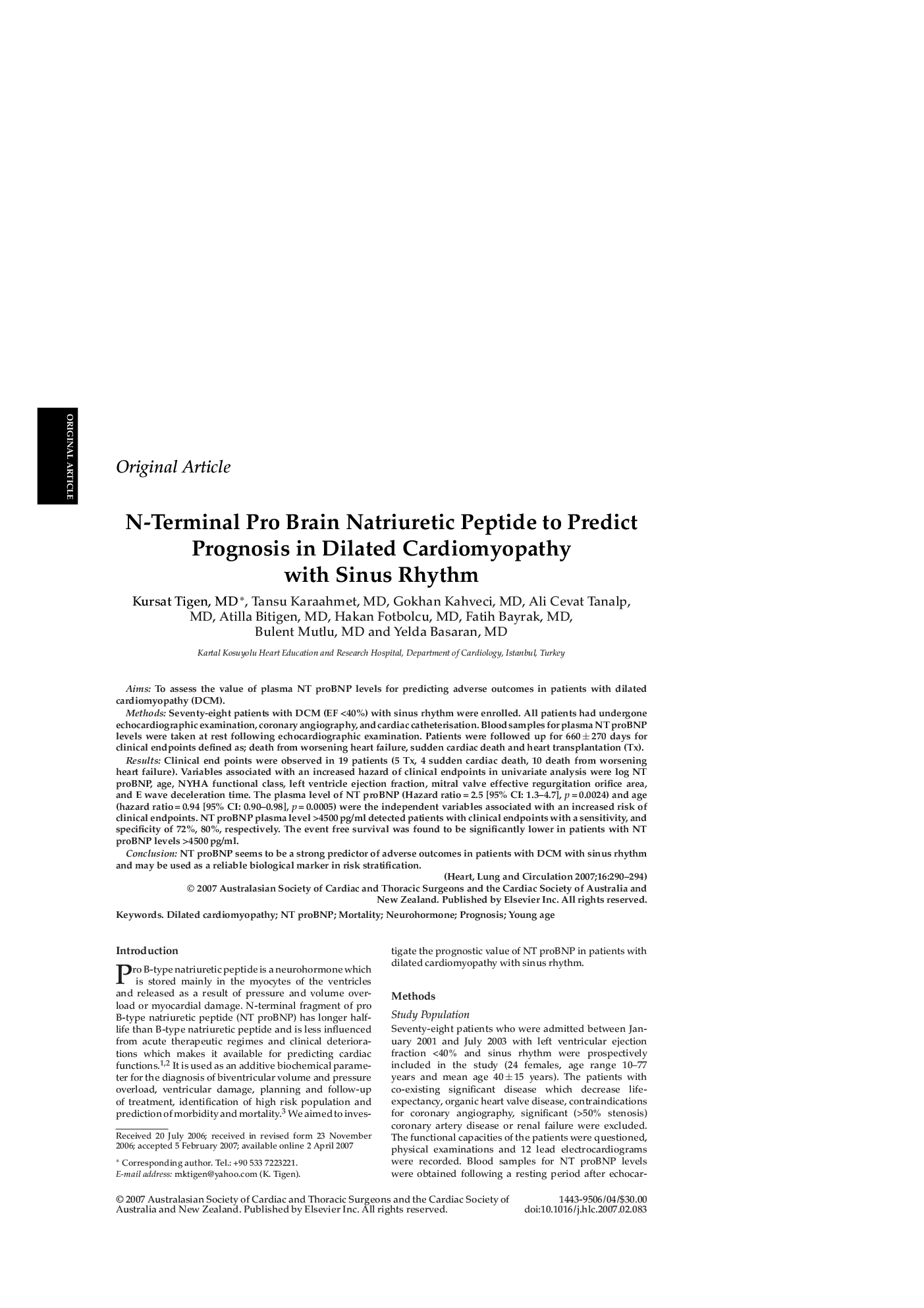| Article ID | Journal | Published Year | Pages | File Type |
|---|---|---|---|---|
| 2921352 | Heart, Lung and Circulation | 2007 | 5 Pages |
AimsTo assess the value of plasma NT proBNP levels for predicting adverse outcomes in patients with dilated cardiomyopathy (DCM).MethodsSeventy-eight patients with DCM (EF <40%) with sinus rhythm were enrolled. All patients had undergone echocardiographic examination, coronary angiography, and cardiac catheterisation. Blood samples for plasma NT proBNP levels were taken at rest following echocardiographic examination. Patients were followed up for 660 ± 270 days for clinical endpoints defined as; death from worsening heart failure, sudden cardiac death and heart transplantation (Tx).ResultsClinical end points were observed in 19 patients (5 Tx, 4 sudden cardiac death, 10 death from worsening heart failure). Variables associated with an increased hazard of clinical endpoints in univariate analysis were log NT proBNP, age, NYHA functional class, left ventricle ejection fraction, mitral valve effective regurgitation orifice area, and E wave deceleration time. The plasma level of NT proBNP (Hazard ratio = 2.5 [95% CI: 1.3–4.7], p = 0.0024) and age (hazard ratio = 0.94 [95% CI: 0.90–0.98], p = 0.0005) were the independent variables associated with an increased risk of clinical endpoints. NT proBNP plasma level >4500 pg/ml detected patients with clinical endpoints with a sensitivity, and specificity of 72%, 80%, respectively. The event free survival was found to be significantly lower in patients with NT proBNP levels >4500 pg/ml.ConclusionNT proBNP seems to be a strong predictor of adverse outcomes in patients with DCM with sinus rhythm and may be used as a reliable biological marker in risk stratification.
